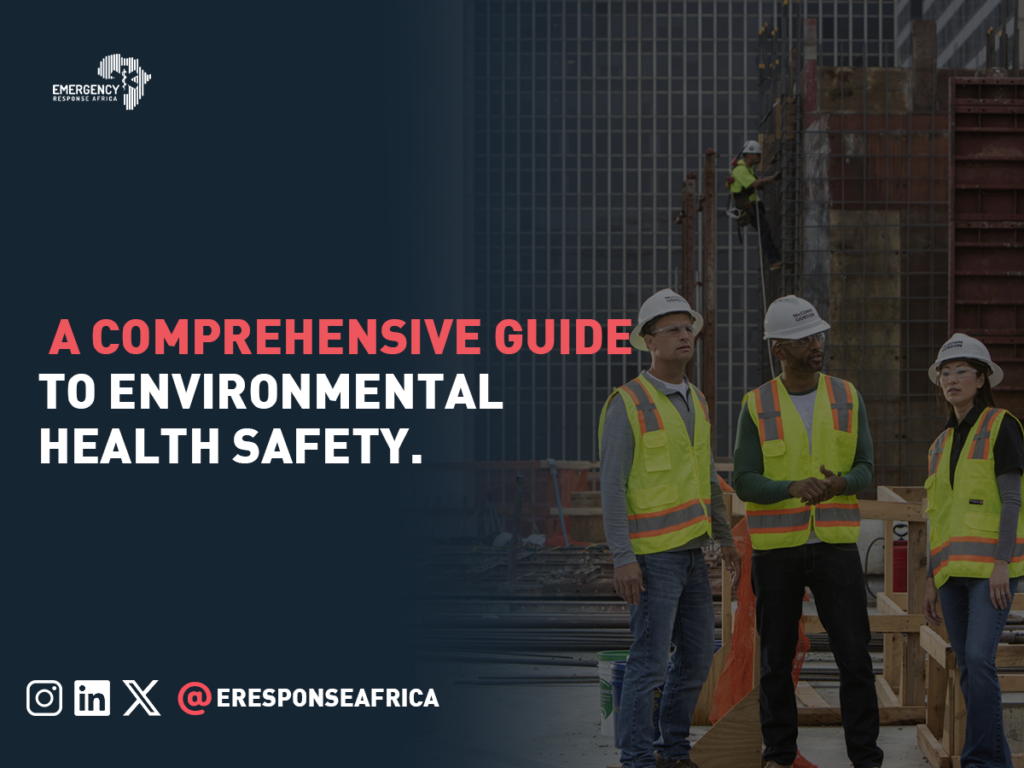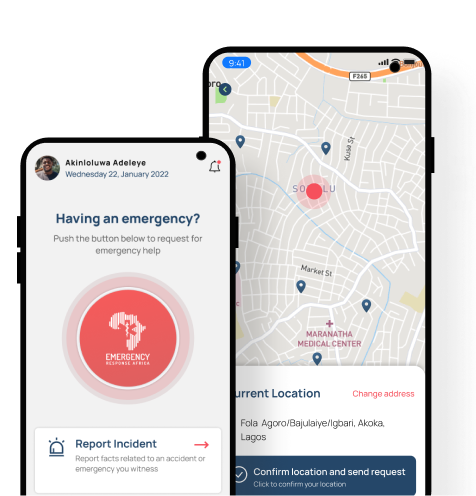Have you ever wondered how businesses can operate safely while minimizing their environmental impact? It takes planning, responsibility, and the right practices to protect both people and the planet.
Environmental Health and Safety (EHS) is about creating safer workplaces, preventing harm, and reducing environmental risks. It covers everything from managing waste and chemicals to preventing injuries and ensuring clean air and water.
Whether at home, in an office, or on a construction site, EHS plays a vital role in promoting health and safety. This guide explains the core areas of EHS, why it matters, and how to apply it in everyday life.
What Is Environmental Health and Safety?
Environmental Health and Safety (EHS) is a field dedicated to safeguarding human health and the environment by identifying and mitigating potential hazards in various settings, including workplaces and communities. It encompasses practices aimed at preventing accidents, reducing environmental damage, and ensuring compliance with relevant laws and regulations.
The importance of EHS is clear when looking at global health data. In 2016, about 24% of all deaths around 13.7 million people were linked to environmental risks that could have been prevented. This shows why strong EHS practices are essential in reducing avoidable illnesses and injuries.
Basic Principles of Environmental Health and Safety
EHS is based on three fundamental pillars that work together to create a safe, healthy, and sustainable environment.
1. Environmental Protection
This includes protecting the environment from pollution and destruction caused by human activities. The National Environmental Standards and Regulations Enforcement Agency (NESREA) oversees environmental policies in Nigeria to ensure compliance. Here are some important strategies they adopt:
- Pollution prevention and control: Reducing pollutants at the source by using cleaner materials and efficient processes. For example, paint manufacturers now avoid volatile organic compounds (VOCs) that contribute to smog.
- Waste Management: Proper handling of hazardous and non-hazardous waste prevents environmental damage. Recycling materials like paper and cardboard helps conserve resources.
- Sustainable business practices: Companies are shifting to renewable energy sources like solar and wind, improving water conservation, and using eco-friendly packaging.
Key regulations under NESREA include:
- National Effluent Limitation Regulation requires industry facilities to have anti-pollution equipment for effluent treatment.
- National Environment Protection (Pollution Abatement in Industries and Facilities Producing Waste) Regulations (1991) prevent the release of hazardous substances into Nigeria’s air, land, or water beyond approved limits set by the Agency.
- Federal Solid and Hazardous Waste Management Regulations (1991): This act compels industries to identify hazardous wastes that are dangerous to public health and the environment and to research the possibility of recycling them.
These policies allow these companies’ activities within a structure that safeguards the environment from any harm.
2. Occupational Health and Safety
Another key principle of Environmental Health and Safety (EHS) is to ensure a safe and comfortable workplace for the employees. The Occupational Safety and Health Association of Nigeria (OSHAssociation) promotes best practices nationwide, working with local and international organizations to enhance workplace safety. This involves:
- Identifying Workplace Hazards: Risks can be physical (slips, falls, extreme temperatures), chemical (toxic substances), or biological (bacteria, viruses). For example, construction sites face falling object hazards, while chemical plants expose workers to hazardous materials. Risk
- Risk Assessment and Mitigation: Employers assess hazards and implement controls, such as ventilation systems for dust or gases and safety procedures for handling dangerous materials. If risks remain, workers use Personal Protective Equipment (PPE) like gloves, goggles, and earplugs.
- Creating a Safe Work Environment: This includes clear safety protocols, regular inspections, and fostering a culture where employees report hazards. For example, lockout/tagout procedures prevent accidental machine start-ups, reducing injuries.
- Emergency Preparedness: Companies must have a plan for medical emergencies, accidents, or health crises. This includes training employees in first aid and CPR, as well as ensuring quick access to emergency care. Services like Emergency Response Africa provide both training and rapid medical assistance, helping businesses respond effectively to critical situations.
3. Health and Safety Program
A well-structured EHS program is essential for protecting the environment and employee health. It provides clear guidelines for safety and risk management. This involves:
- Documented Procedures: A formal plan outlines hazard identification, risk assessment, safety practices, and emergency protocols. This ensures employees understand their roles in maintaining a safe workplace.
- Training & Communication: Regular training keeps employees informed about safety standards, proper PPE use, and emergency response procedures. Well-informed workers make safer decisions and take necessary precautions.
- Accident Reporting & Investigation: A strong EHS program includes protocols for reporting accidents, injuries, and near misses. Investigating incidents helps identify risks and prevent future occurrences. Encouraging open reporting without fear of punishment fosters a culture of safety.
Benefits of a Strong Environmental Health and Safety Program
Now that we’ve gone over the basic principles of the EHS program, let’s discuss in detail the tangible advantages that implementing a good EHS program would bring.
1. Minimizing the Risk of Accidents and Injuries
Environmental Health and Safety programs often play a big part in preventing workplace accidents and injuries since they introduce initiatives to proactively look for hazards, train workers, and shape an environment where safety is integral to company culture.
Apart from that, the well-being of your personnel will not be affected. Indeed, the company’s operating efficiency and expenses will also be preserved.
2. Improve Employee Health and Well-Being
People safety programs are widely recognized, not just for the protection of employees at work but also for other objectives.
In addition, we attentively create a safe working environment for our staff with measures such as air ventilation, good job positioning, and individual protective gear. This may also result in enhanced workforce health, decreased absences from work, and lowered healthcare costs for employers and employees.
3. Strengthen Compliance With Regulations
Did it ever occur to you what might be the consequences for a company that brings up the standards of the Environmental Health and Safety rules?
Consequently, such offences are extremely dangerous, including penalties, fines, production shutdowns, and even crime charges.
A proper and robust EHS program helps companies meet regulatory requirements and no longer have to experience these high-cost consequences.
4. Improve Brand Reputation
Nowadays, buyers seek out companies that have a reputation for acting responsibly. By pledging to protect the environment and safeguard employee well-being, a visible element of the organization’s EHS program, a corporate organization can enjoy an overwhelming brand reputation.
This achieves both internal and external development, thereby retaining long-term customers, attracting global talent, and becoming a power of reckoning in the market arena.
5. Reducing Costs by Preventing Accidents and Decreasing Downtime
Given that the positive economic impacts of EHS go beyond the case of fines, the next point should be stated. It ensures the reduction of medical expenses and workers’ compensation claims, as fewer accidents are experienced.
Furthermore, these programs are important because efficiency and costs are reduced, while accidents that destroy used equipment and interrupt production are avoided. According to research, organizations with enhanced EHS programs demonstrate lower average insurance premiums and workers’ compensation claim frequency.
Here’s a real-world example.
A major petrochemical company implemented a comprehensive EHS program to enhance safety and improve employee training.
As a result, workplace accidents dropped significantly, reducing treatment costs by about tenfold. Beyond the economic benefits, this created a safer, healthier, and more supportive work environment for employees.
6. Improved Employee Morale
When employees feel safe and valued by the employer’s commitment to safety and well-being, morale and job satisfaction improve.
7. Increase Innovation
A safe and healthy work environment fosters a culture of creativity and innovation because employees feel empowered to take calculated risks and explore new ideas.
8. Strengthening Relationships with Stakeholders
EHS initiatives demonstrate a company’s responsibility to its employees, environment, and communities. It can strengthen relationships with stakeholders such as investors, regulators, and community groups.
Strategies for Implementing Environmental Health and Safety Programs
Ready to take action and implement an EHS program in your workplace? Here is a summary of the steps to get started:
Conduct a Workplace Risk Assessment
The first step in any EHS program is identifying potential hazards. This includes physical risks (like slips and falls), chemical hazards (such as exposure to toxic substances), and biological risks (like bacteria and viruses). Regular assessments ensure that risks are spotted early and dealt with before they cause harm.
Develop and Implement Safety Procedures
Having clear safety procedures ensures that employees know how to handle risks. These procedures should include guidelines for handling hazardous materials, operating machinery safely, and responding to emergencies. Organizations must document these protocols and update them regularly to match evolving risks and regulatory changes.
Train Employees on Environmental Health and Safety Practices
Training is essential for maintaining a safe work environment. Employees should be educated on workplace hazards, proper use of protective gear, emergency response steps, and environmental conservation.
Emergency Response Africa is a leading provider of up-to-date emergency response protocols and workplace safety training, equipping your team with the skills to handle emergencies effectively.
Monitor Compliance with EHS Regulations
Ensuring that employees and management follow safety regulations is crucial. Organizations should conduct regular audits and inspections to check compliance with local and international EHS standards. If violations are found, immediate corrective actions must be taken. Keeping detailed records of compliance efforts can also protect businesses from legal liabilities.
Encourage a Safety-First Culture
Creating a culture where safety is a top priority helps prevent workplace accidents. Employers should encourage employees to report hazards without fear of punishment and reward those who follow safety guidelines. Open communication and leadership support strengthen safety awareness across all levels of the organization.
Invest in Proper Safety Equipment and Infrastructure
Providing employees with the right safety gear such as gloves, helmets, masks, and fire extinguishers reduces the risk of workplace injuries. Organizations should also invest in environmental protection systems like air filters, waste disposal units, and water treatment facilities to minimize environmental harm.
Respond Quickly to Emergencies
No matter how well-prepared a workplace is, emergencies can still happen. Having an emergency response plan, including first aid stations and evacuation procedures, can save lives. Employers should also collaborate with professional emergency response services for quick intervention in medical or environmental crises.
Conclusion
Environmental Health and Safety (EHS) may seem complex, but at its core, it’s about protecting people and the environment we all rely on. By implementing EHS measures, companies can operate responsibly, minimize their environmental impact, and create safer workplaces.
Remember, a safe workplace goes hand in hand with a sustainable environment. Let’s embrace EHS principles and take meaningful action to build a Nigeria where both people and nature can thrive.



